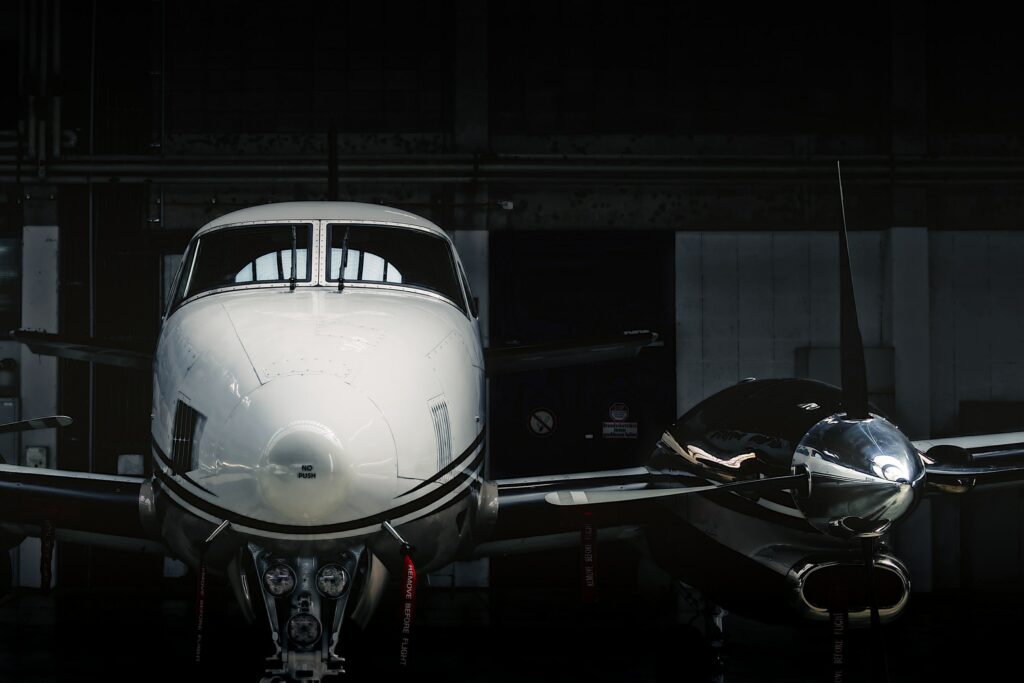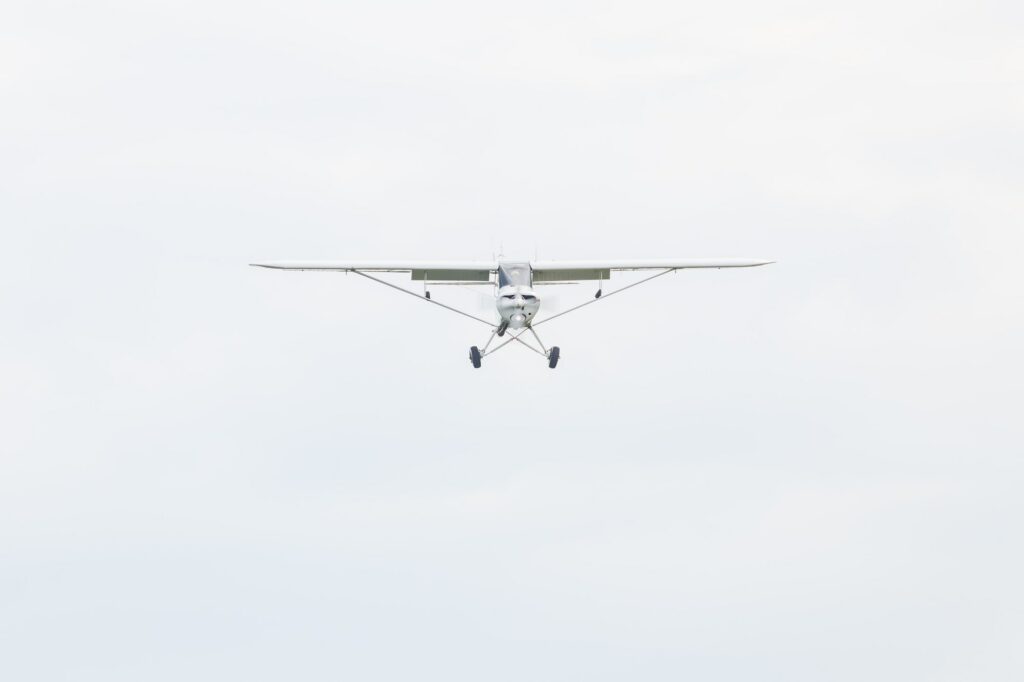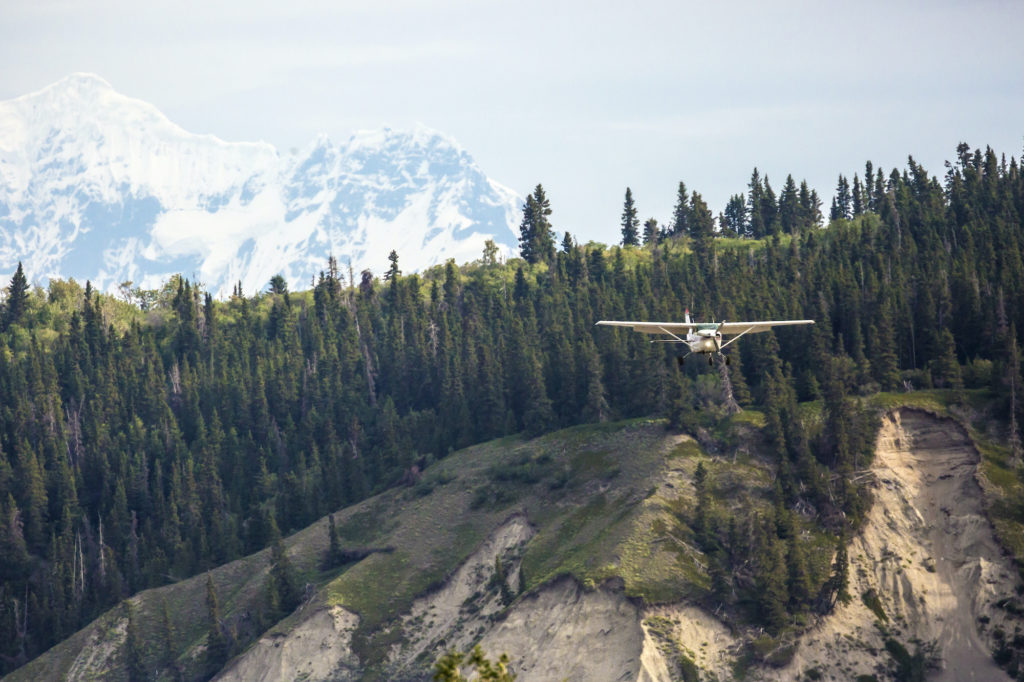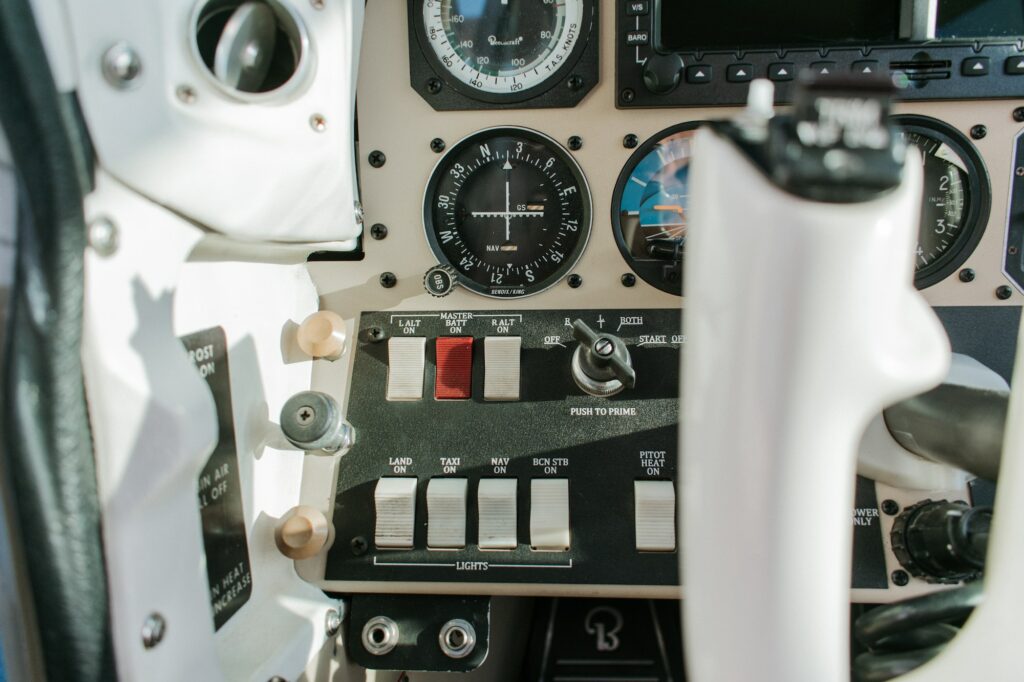
Is Two Safer Than One?
Is Two Safer Than One?
For many, a second engine adds more risk than it mitigates.
Many pilots assume two engines are safer than one. While this is generally true, achieving a safer outcome is not so cut and dry. For many, a second engine adds risk. And that’s because a second engine adds complexity that many pilots are not sufficiently trained or disciplined to manage safely.
Multi-engine flying exacerbates pilots’ weaknesses in a few areas, including preflight planning, flight discipline, knowledge of aerodynamics, stick and rudder skill, and systems management.
To fly multi-engine airplanes safely, pilots must overcome these weaknesses. They must plan well, have the discipline to follow the plan, understand the aerodynamics and aircraft systems, and train enough to execute well.
Multi-engine pilots are frequently lulled into a false sense of security because multi-engine flying isn’t much different from single-engine flying, that is until you’re flying a multi-engine aircraft with only one engine operating. The privilege of a second engine comes with the responsibility to respond to an engine failure at any time. In light multi-engine trainers, commonly referred to as “light twins”, this engine failure can not only make the airplane difficult to control, it can severely degrade performance. For that reason, it’s critical to plan with degraded performance in mind.
Planning for Safety
Too many multi-engine pilots only plan on a two-engine departure and neglect to consider what happens if an engine fails along the way. Multi-engine flying demands a preflight that considers the airplane’s performance with one engine and two. Generally speaking, light twins have abysmal single-engine performance.
When one engine fails in a two-engine airplane there’s a 50% loss of thrust, but a far higher—typically 80% or so—drop in performance. This can often make the difference between clearing or not clearing trees at the end of the runway.
When you book a flight on an airline, that flight must have sufficient performance planning so that the pilots can safely manage an engine failure at any point during takeoff—either by stopping or going. It’s a regulatory requirement. And those airplanes are accordingly quite powerful—the average airline passenger has experienced few, if any, full-power takeoffs.
But that’s not a requirement in our multi-engine training world, and the airplanes are far less powerful. In light twins, it’s extremely common to depart a field with performance planning that doesn’t leave pilots with many options following an engine failure at takeoff.
And yet, that’s probably not a good idea, right? Ideally, every multi-engine takeoff comes with the ability to, at every point during takeoff, either discontinue the takeoff and stop on the runway, continue and clear obstacles safely, or possibly either. We never want to be in a situation where an engine failure means we cannot stop before the end of the runway, but neither can we continue the takeoff and clear obstacles. At that point, we’re crashing.
Nonetheless, we all find ourselves tempted to violate this for one major reason, which we’ve already mentioned: multi-engine trainers like the Piper Seminole have abysmal performance on one engine.
In hot training environments like Arizona it’s very common for such a trainer to be unable to even hold level flight after an engine failure in cruise—let alone out-climb obstacles on takeoff!
And for this reason, it is essential that we stick to the performance plan we develop in preflight. Especially because we’ll be so tempted to violate it. This part is much easier said than done.
But say that, like many multi-engine pilots, you find yourself in a situation where the takeoff performance margins aren’t great. And even though you know this isn’t a great idea, you’ll go ahead with it because it’s the only multi-engine trainer available in a two-hour radius of your home and you would really like to knock out this multi-engine training! We sure aren’t recommending it, but we know how it goes.
While we are accepting additional risk, we can still mitigate other risk where possible! We can reduce payload to avoid incurring additional performance penalties. We can make sure that we preflight well, sump the tanks, and perform thorough run-up. And we can ensure that we have an adequate plan for what we’ll do, even if an engine fails.
By planning for the worst, and having the discipline to stick to it, we are mitigating risk. We know that we won’t have the performance to clear obstacles on a single engine. What will we do instead, and at what points along the takeoff roll? If the engine fails at 100 knots, what will we do? At 110 knots? At 120 knots? Is there a field we could sidestep to for a landing? Could we reject the takeoff and go off the end, but be safer than if we continued? There isn’t always a perfect solution, but it’s important that we consider it, develop a plan, and have the discipline to stick to the plan. In other words, be just as diligent with engine failure planning in a twin as you would be in a single-engine aircraft.
Stick To Your Plan
When the worst does happen, it’s extremely tempting to try and hope our way of the situation. Maybe we can squeeze a little more performance out of this machine! But that wasn’t part of the plan—and for good reason. Hope isn’t enough. Trying to force more out of the machine will put us below minimum control speed. We will roll over and impact the ground, and a controlled crash in a field—even a forest—is far better in comparison.
In some respects, this shares commonality with flying single-engine airplanes. If your engine quits on takeoff you have limited options. Have a plan, stick to it, fly the airplane, and make the most of it.
Know The Air
We’ve planned well, and we’ve dedicated ourselves to sticking to the plan. Our next challenge is understanding OEI aerodynamics sufficiently so that we can do the right things when we experience an engine failure. Rote memorization of procedures alone is not enough, because engine failures can happen in various flight regimes, under various conditions, and to various degrees. Your actions must meet the situation.
Let’s say we mostly practice complete engine failures on takeoff, but we encounter a partial-engine failure during cruise. We cannot respond to them with the same control pressure or control deflection. There are a multitude of variables at play, and understanding them promotes an appropriate response should the need arise.
Why does a light twin with one engine inoperative (OEI) lose the vast majority of its performance, even though it only loses half of the thrust? If the right engine fails, how should our hands and feet move, and why? If we are hovering around our minimum control speed and we increase pitch, what will happen?
The vast majority of multi-engine training focuses on this area, and rightfully so. But it’s very definitions-based, and like most things in flying, the important part is not just knowing the definitions and concepts but being able to apply them in the air.
When one engine fails, the asymmetric thrust produced by having a single operating engine on the wing, away from the longitudinal axis, produces a yawing force towards the inoperative engine. eLeft engine fails, nose pulls left. In most light trainers the engines are mounted on the front of the wings, resulting in accelerated slipstream over the top of the wings. With one engine inoperative, this also results in asymmetric lift and a rolling movement towards the dead engine. Left engine fails, airplane rolls left. Reduced slipstream over the horizontal stabilizer will also result in a small decrease in pitch.
This is not a very safe, or aerodynamically efficient position to be in. So we’re going to do something about it! Above all, we must maintain directional control. Usually this is done with the rudder, but things aren’t necessarily that simple. If we are at a high power setting and below our minimum control speed, the rudder alone will not do it—even fully deflected. We may need to reduce thrust on the operating engine. Likewise, in a turn towards the failed engine our minimum control speed will be higher and a change in wing loading, bank, and/or power may be required, along with rudder. Above all, we must maintain directional control.
Once we’ve ensured directional control, we want to fly efficiently so that we maximize performance. To do this, we establish a zero sideslip condition. When we first experience an engine failure, the result is a sideslip towards the operating engine. When we use rudder to regain directional control, this creates a sideslip in the other direction, towards the dead engine. To correct for this, we bank towards the operating engine just slightly—only 2-5º- then use only a small amount of rudder (1/2 ball as measured by the inclinometer). This produces a more efficient, zero sideslip condition.
And yet, “efficient” as it may be, the airplane has likely still lost 80% of its two-engine performance. We’re still flying, but we’re using considerable control force to maintain directional control and maximize efficiency, and it’s still rather inefficient. Whether or not we can trim away those control pressures, we’re still inducing considerable drag on the airplane itself.
Remember how slipstream, p-factor, and torque act on a single-engine piston airplane? Those forces are present in multi-engine airplanes too. If the engines are on the wings (as in most multi-engine airplanes) and turn in the same direction, one engine more negatively impacts performance when failed. This is known as the critical engine. For airplanes like the Cessna 310—or a Boeing 737 for that matter—with engines that rotate clockwise from the pilot’s perspective, this is the left engine.
Many light twins used for training, like the Piper Seminole, use a counterrotating system that eliminates the critical engine. But critical engine or not, engine failures still demand discipline and skill.
If we’re not going to restart the failed engine, we’ll probably feather the blades. This means moving them to an extremely high angle, making them completely useless as propeller blades but aligning them with the relative wind. The result is reduced drag.
We should also understand how configuration changes affect our performance and stability. Generally, stuff hanging down (flaps, cowl flaps, gear) adds drag, which worsens performance but improves stability.
While sufficient aerodynamic understanding is very important, we have to practice to proficiency in the airplane as well. It’s not wildly uncommon for a pilot to use the wrong rudder, or attempt to shut down the operating engine when in the “hot seat”. That this sounds so incredibly moronic just highlights the gap between understanding and execution in the moment—and that’s why we have to train. Understanding is not enough!
Train Until You Can’t Do It Wrong
Critical thinking is perhaps the most important component in a safe cockpit, but prompt and correct action is a close second. Sometimes we don’t have time to think our way through a problem. Or rather, we need to promptly correct an unsafe situation so that we can give ourselves more time to problem-solve. A pilot won’t get the chance to troubleshoot an engine failure on climb if they over pitch, drop below Vmc, and impact the ground inverted.
This process starts by applying our aerodynamic knowledge on the ground in the form of chair flying. Think of how you’ll respond in different scenarios. Work through it with your instructor. Practice the hand and foot motions. Imagine the direction the nose will move. And do it again and again.
Then you can progress to doing it under supervised, well-controlled, simulated conditions in the actual airplane with your instructor. This is a core part of multi-engine training.
It’s also a skill, like any pilot skill, that atrophies with time. A pilot with multi-engine privileges who has not simulated flying with one engine inoperative regularly (and recently) is very dangerous.
Train, train, train. It can get a bit monotonous—good. Once it gets a little boring that could mean you finally have a grasp of it. It’s certainly not boring at first!
Managing Your Systems
We’re well on our way to safely flying multi-engine airplanes! We preflight plan well, with conservative performance, and we maintain a level of discipline that keeps us out of the most precarious situations. We understand the aerodynamic considerations associated with an engine failure, we know how to manage it, and we simulate it enough times in the airplane that we can perform. But there’s a topic we haven’t yet discussed, and it’s another significant safety challenge in multi-engine flying: airplane systems.
A second engine increases system complexity. With a second engine comes a second propeller and governor, a second starter, and a second alternator. It also often includes a more complicated fuel system, with various pumps, tanks, and valves. Systems mismanagement can, especially in certain makes and models, put us in a very bad position.
In the Cessna 310, for instance, unused fuel is returned from the engine to the outermost wing tip tanks. That is the only place the fuel can be returned to. If fuel is used from the tanks inside the wings first, with full tip tanks, all of that returned fuel is lost through the fuel vent. Yikes!
Multi-engine airplanes are often a pilot’s first introduction to cowl flaps, retractable gear, high-performance engines, air conditioning and heating systems, oxygen systems, and more.
Take the time to know your systems well. It’s dangerous, not to mention embarrassing, to mismanage fuel and run out of gas.
Are Twins Safer? It’s Up To You
By now, you hopefully see that multi-engine flying demands respect. Two engines provide redundancy and often additional comfort and speed. But multi-engine airplanes require thoughtful, disciplined planning, study, critical thinking, and lots of practice. While many factors contribute to the enviable airline safety record, a significant component is high-fidelity simulator training with a heavy focus on flying with one engine inoperative.
It’s the unfortunate reality that multi-engine airplanes are incredibly easy to operate when both engines are functioning, and many a pilot is lulled into a false sense of security.
Safe multi-engine pilots know it’s a matter of when the engine fails, and they operate accordingly.
All that said, multi-engine flying is FUN! It opens up new opportunities. Do it safely, so you may enjoy it for years to come.






